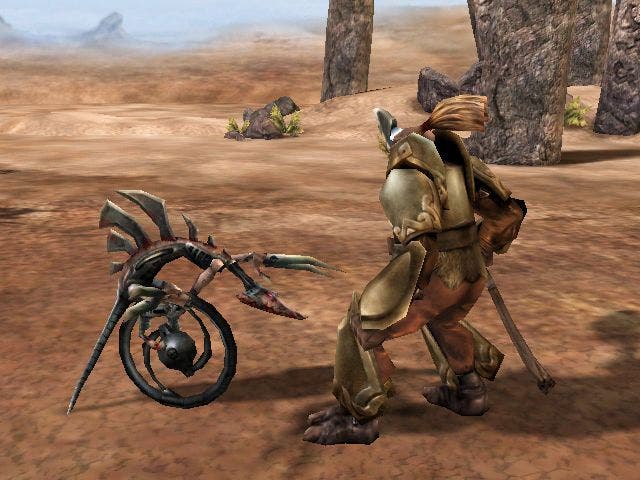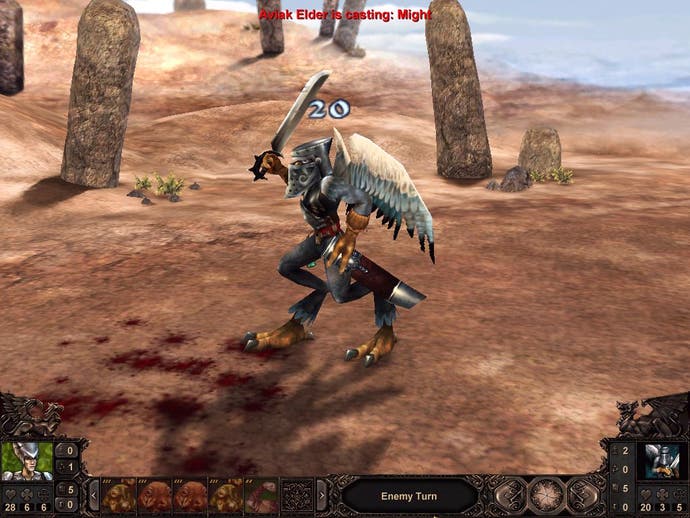Alex Dmitrevsky of Nival Interactive - Part One
Interview - Russian developers Nival Interactive talk to us about their new fantasy strategy game
One of Russia's more established gaming companies, Nival Interactive are the brains behind the Rage of Mages series, and more recently the excellent 3D role-playing game Evil Islands. With their latest title Etherlords due for release through German publisher FishTank towards the end of the year, we caught up with Nival's vice-president of marketing Alex Dmitrevsky to find out more...

Heroic Gathering
As Nival were quick to admit, Etherlords draws heavily on established role-playing strategy games such as New World's Heroes of Might & Magic series. But whereas these games typically feature chess-like battles with armies made up of many thousands of troops, Etherlords sports a spell-based combat system which has more in common with the card games of Wizards of the Coast.
"Etherlords' combat system is based on a principle similar to that of Magic : The Gathering and other collectible card games. Such combat can be described as highly combinatorial. Roughly speaking, it means that every single action you perform has a new and much greater meaning within a combination of a number of other actions. With over three hundred spells, you have an immense choice of winning combinations to create individual battle tactics against your enemies."
The game also has a very unique look to it, with races ranging from angular Gigeresque biomechanical creatures to more traditional fantasy stereotypes. "The idea was to create four very distinct visual styles for the four kinds of magic, so that looking at any object in the game, such as terrain types, battle screens, buildings, creatures and heroes, you could immediately say which kind of magic they belonged to. These styles should bring on certain associations with Magic : The Gathering and general fantasy traditions, but at the same time be completely original. You could say that we intentionally deviated from fantasy standards, and introduced elements of sci-fi and even cyberpunk styles."

Two Worlds Collide
All of this helps to set Etherlords apart from other turn-based fantasy games such as the Heroes franchise and Age of Wonders, because as Alex told us it really is "the first title that brings together collectible card game based combat and resource management" in a single game.
"On the one hand, you've got an immense tactical scope and freedom of choice. Your overall strategy is no longer linear and easily predictable: instead of simply waiting until you have enough money to afford the strongest units in your army, you can find various winning combinations of spells that together will offer you a unique tactical advantage at any stage of the game."
"On the other hand, while Heroes is principally a base game, Etherlords is a territorial wargame. You can build forts protecting approaches to territory you have captured anywhere on the map. It means that you don't lose much if your hero dies: you can hire a new one and easily pack his spellbook with new spells using shops and resources on the territory you control."
The result is different enough to make it stand out from the crowd, but still familiar enough to make veterans of other turn-based strategy games feel at home. And as Alex revealed, the gameplay draws on many of the genre's best known games. "While designing Etherlords' adventure mode we appealed to such classics of the turn-based strategy genre as Masters of Magic and Master of Orion, although later on we re-designed the strategic gameplay in favour of a closer similarity to Heroes of Might & Magic."

Balance Of Power
Although the combat system is certainly innovative and makes a welcome change for this rather stagnant genre, it didn't quite gel when we played a pre-beta version of the game earlier in the year. Battles were often very difficult, and the random drawing of spell cards meant that you could sometimes end up with a totally useless hand which could put you on your back foot for the rest of the fight.
"Of course, Etherlords spell system balance will be further improved", Alex assured us. "However, one of the most important skills that the player has to develop to battle through Etherlords successfully is to comprise a hero's spellbook in such a way that, whatever random selection of spells comes to his hand during one turn, there will always be something useful. Only such spellbooks can be considered as well-balanced and strong. Finally, battles against creatures are more often than not defensive by nature, although such tactics will not necessarily be justified in combat against enemy heroes."
The heroes also play a more passive role in Etherlords when it comes to combat, with the creatures that they summon doing all of the fighting and the heroes simply standing there to take the punishment. "The reason for that is the game's focus on multiple magical interactions; it would be unjustified to have just one plain option of physical attack in contrast to so many magical options", Alex explained. "We would have to implement as [many] varied opportunities for physical interaction between heroes, but this would be a totally different game and rather complex for the player, because it can be rather frustrating to have to keep so many combat factors in mind at the same time."

Animating Magic
Something else which sets Etherlords apart from the rest of the turn-based role-playing strategy genre is its graphics. While most games have remained resolutely two dimensional, with sprite-based visuals and a primitive top-down or isometric view of the world, Etherlords features a fully 3D graphics engine.
"Etherlords is one of the very few turn-based strategy games with cutting-edge true 3D graphics, free camera, and thorough attention given to details", Alex boasted. "Our intention was to make the game as spectacular as only console titles could aspire to look so far. To that end we gave a lot of thought and effort to object animations and special effects in both strategic and combat modes."
The engine itself is an updated version of the one which powered Evil Islands to great effect last year, and as a result the graphics look a real treat. "We increased the number of polygons per frame from 30,000 to 50,000, which visibly affected models and textures. For instance, a character model in Evil Islands had 600-1700 polygons, used a texture of 256x256 pixels and body-part animation. An average model in Etherlords uses 750-2500 polygons, a 512x512 pixel texture and a single-skin morph animation. We also added a special utility to the Etherlords engine that allows the porting of special effects animations directly into the game. As a result, we were able to create a great number of diversely animated particle effects for magic spells and buildings."
The outcome of all this work is certainly impressive, and it's no surprise to learn that Nival's artists cite the "thorough attention to detail" of Quake III as one of the great influences on their character designs for Etherlords. To find out whether the gameplay can match the graphics, come back next week, when we will be discussing the game's single player campaign and multiplayer options with Nival, neither of which were fully implemented in the pre-beta copy we saw earlier in the year.
-
Etherlords screenshots

